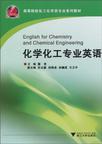化学化工专业英语
出版时间:2010-8 出版社:浙江大学出版社 作者:董坚 编 页数:250
前言
专业英语学习带有强化训练的性质,与双语教学不同,两者不能相互替代。作为“浙江省高等学校重点建设教材”,本书旨在通过培养大学生对科学探究和发明创造的兴趣,激励学生学习好专业英语,从而为将来可能从事的企业产品开发宣传或基础研究所需的专业英语技能打好基础。本书尽力做到选材面广,趣味性、可读性强,适用面宽。 化学和化工业是一个长久不衰的行业。本书选择了在新药开发、新能源、新材料、环境保护、生物技术和现代食品业等领域中的一些突破性和创新性成果和实例,采用了被美国化学会认定评估为“化学标志性”成就的事件和人物案例,讲述了曾做出杰出贡献的化学家和工程师的勇于探索的故事,此外还精选了前沿领域中的一些原始学术论文(包含Nature和JACS等上刊登的论文)和专利文献,并对如何阅读理解和利用英语学术论文和专利文献、如何撰写及修改论文的实用方法技巧,做了非常详细的讲解。每个单元最后有课文注释,单词解析及课后练习(包含阅读理解测试和短文、摘要的写作训练,以及课堂讨论教学实例)。 本书共28个单元。第l部分共8个单元,主要是介绍化学化工学科的一些入门基础知识,包括化学实验和化工工艺方法、仪器工具和化合物命名等。第2部分共16个单元,内容覆盖无机化学、有机化学、分析化学、环境化学、物理化学、生物化学、高分子化学、药物开发、基础化工等,既从化学化工的历史沿革的角度,又从学科发展的热门领域的角度,介绍化学和现代化工的成就。第3部分共4个单元,介绍常见专业文献阅读和撰写技能知识,包括学术论文、国际发明专利基础知识和文献选读。
内容概要
This book selects a number of breakthroughs and examples in the development of new energy technology,biotechnology, novel materials and drugs, environmental technology, and other fields. A few historic events and figures designated by the American Chemical Society as "Chemical Landmarks" are adopted. Also featured in the book are a group of original papers and patent documents in the cutting-edge fields of chemistry and chemical industry. Stories about how the chemists and engineers vigorously explored and made great inventions are described in the book. Following the texts in each unit are notes, words with pronunciations and meanings, quiz including exercises and drills for reading comprehension and short compositions, and in-class discussion themes.This book also explains in detail how to comprehend and utilize papers and patent documents, and how to write and revise papers in practice. The book contains a significant amount of technical terminology. Lists of common glossaries with concise explanations are provided in the end of the book. Basic laboratory tools are also illustrated graphically. Records of famous chemists and engineers with their lives and areas of expertise can be used as a reference. This book serves as a textbook in bilingual education in colleges for juniors and seniors, as well as graduate students, who are non-native speakers of English but majoring in chemistry, applied chemistry, chemical engineering, materials chemistry and related disciplines. The book is also an indispensable working resource for scientists, chemists,and engineers in chemical industry and academia. This book is printed in bicolor to improve readability.
书籍目录
Part 1 Laboratory Techniques and Chemical Nomenclature Unit 1 Chemistry Laboratory Techniques-Recrystallization Unit 2 Chemistry Laboratory Techniques-Acid-Base Titration Unit 3 Chemistry Laboratory Techniques-Isolation, Purification, and Identification of Caffeine Unit 4 Continuous Processing for Scaling Up Laboratory Processes Unit5 Nomenclature of Inorganic Compounds (1) Unit 6 Nomenclature of Inorganic Compounds (2) Unit7 Nomenclature of Organic Compounds (1) Unit 8 Nomenclature of Organic Compounds (2)Part 2 Chemical Science and Industry: History and Frontier Topics Unit 9 Neil Bartlett and Reactive Noble Gases Unit 10 Birth of Aluminum by Electrolysis Unit 11 Jack Kirkland and HPLC Silica Packings Unit 12 Arnold O. Beckman and the pH Meter Unit 13 Victor Grignard and Grignard Reagent Unit 14 Georg Wittig and Wittig Reaction Unit 15 Developments in Lithium Battery Research Unit 16 Clean Coal Technology Unit 17 Frederick Sanger Unit 18 Discovery and Development of Cimetidine Unit 19 Wallace Carothers and the Development of Nylon Unit 20 High Performance Carbon Fibers Unit 21 Human Health Effects of Air Pollution Unit 22 Flavor Formation in Meat Products Unit 23 Herbert Dow and His Dow Chemical Unit 24 Development of Kevlar in DuPontPart 3 Original Literature Unit 25 Critical Reading of a Scientific Paper Unit 26 How to Write a Scientific Paper Unit 27 How to Submit a Paper and Ethical Issues Unit 28 Fundamentals of PatentsPart 4 Commonly Used Terminology and References Appendix 1 Glossary of Terms Used in General and Inorganic Chemistry Appendix 2 Glossary of Terms Used in Organic and Biological Chemistry Appendix 3 Glossary of Terms Used in Analytical and Physical Chemistry Appendix 4 Element Names and Their Pronunciation Appendix 5 A List of Chemists Appendix 6 A List of Chemical Engineers Appendix 7 United States Patent Example: US 6677362 Appendix 8 Basic Laboratory Equipment
章节摘录
Load a small amount of solid into a test tube, followed by adding about one milliliter of the testsolvent. If the solid dissolves immediately at room temperature, the solvent is not suitable forrecrystallization. Repeat this process with another test solvent using a clean test tube. If the solid doesnot dissolve, heat up the test tube using a hot water bath whose temperature is set at the boiling pointof the test solvent. If the solid still remains, then this solvent is not good, either. Repeat with othersolvents until the solid remains at room temperature, but dissolves in the solvent with the temperatureat the boiling point, indicating a good recrystaUization solvent. In the second step, the solid to be recrystallized is dissolved in the hot suitable solvent. TwoErlenmeyer flasks (one for the solvent and the other for the crystals), a hot plate, a disposable pipetand bulb, finger cots, and some boiling stones are needed in this step. Place two boiling stones in eachflask to ensure smooth boiling during heating. A small amount of solvent is added to a flaskcontaining the impure solid, and then the suspension in the flask is heated to the boiling point of thesolvent until the complete dissolution of the solid. If the solid does not dissolve, add more hot solventdrop-wise continually until the solid is fully dissolved. A hot filtration is required if the solutioncontains visible solid impurities other than boiling stones. If the solution appears colored, the hotsaturated solution is boiled for a short period of time with the addition of activated carbon to removecolored impurities, followed by a hot filtration to get rid of the activated carbon.
编辑推荐
本书共28个单元。第1部分共8个单元,主要是介绍化学化工学科的一些入门基础知识,包括化学实验和化工工艺方法、仪器工具和化合物命名等。第2部分共16个单元,内容覆盖无机化学、有机化学、分析化学、环境化学、物理化学、生物化学、高分子化学、药物开发、基础化工等,既从化学化工的历史沿革的角度,又从学科发展的热门领域的角度,介绍化学和现代化工的成就。第3部分共4个单元,介绍常见专业文献阅读和撰写技能知识,包括学术论文、国际发明专利基础知识和文献选读。第4部分对化学化工各个分支领域中的常用的专业术语提供简明扼要的解释,也以图解的方式列出了基本实验工具,还对400多位著名化学家和工程师做了简要介绍,此部分内容可作为参考资料使用。本书配有教学辅助资料,供征订了本书的教师参考。
图书封面
评论、评分、阅读与下载
用户评论 (总计2条)
- 感觉偏向化学工艺方向,化学工程的没涉及多少
- 书还没看。好像挺不错的
推荐图书
- 新课程模块测评卷*物理选修1-1
- 期中期末卷(5年级上)
- 金蝶K/3财务管理与应用
- What Do I Do When? Sex: Answering Your Toughest Questions about Sex, Love, and Dating (平装)
- 命谱
- 4周掌握日语能力考试文字·词汇·语法中级
- 初中语文学与练-八年级上册
- 弹性力学混合变量的变分原理及其应用
- 3-4岁 下
- 英语国家概况
- 机械制图
- 机械制图习题集
- 我这九十年
- 初中语文学与练-九年级上册
- 初中语文学与练-七年级上册
- 大学生就业指南
- 新视野商务英语视听说
- 初中数学学与练-七年级上册
- 建筑材料
- Photoshop CS3基础案例教程
- PSpice电路设计与分析
- 幼儿潜能开发
- 数学建模
- 自行车
- 高中生心理健康教育自助读本
